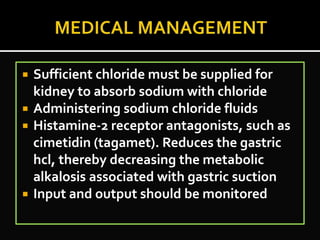Fluid and electrolyte balance is crucial for life and homeostasis. Imbalances can result from various factors and illness. The body maintains balance through fluid compartments and electrolytes like sodium, potassium, calcium, and hydrogen ions. Key organs like the kidneys, lungs, and GI tract help regulate balance. Common imbalances include hyponatremia/hypernatremia, hypokalemia/hyperkalemia, hypocalcemia/hypercalcemia, and acidosis/alkalosis which are treated through fluid management and electrolyte replacement or restriction.
























![ Hypercalcemia [excess of calcium in the
plasma] is dangerous imbalance when severe
Hypercalcemia crisis has a mortality rate as
high as 50% if not treated properly
CAUSES
Multiple myeloma
Prolonged immobilization
Vit D over dose
Thiazide diuretics [slight elevation]](https://image.slidesharecdn.com/electro-221211171100-8b047a21/85/Body-electrolytes-pdf-25-320.jpg)


























